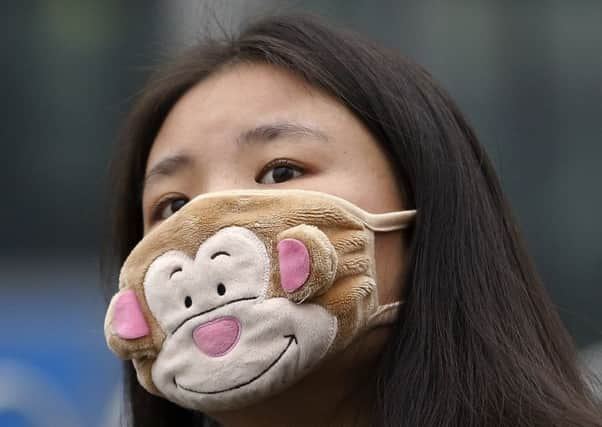Beijing ‘paying price for progress’ with smog


The alert– the most serious warning on a four-tier system adopted in 2013 – means authorities have forecast more than three consecutive days of severe smog. It remains in effect until tomorrow.
Despite some improvement in Beijing’s air over the past year, readings of dangerous particles yesterday were as high as a dozen times the safe level, in what has become an embarrassment for a government that has made a priority of cleaning up the legacy of pollution left from years of full-tilt economic growth.
Advertisement
Hide AdAdvertisement
Hide AdA grey soupy haze subsumed Beijing’s landmarks, and convenience stores did brisk business selling air-filtering masks as residents sought to protect themselves even as they spent as little time outdoors as possible.
Office worker Cao Yong commented: “This is modern life for Beijing people. We wanted to develop, and now we pay the price.”
Under the alert, schools were advised to voluntarily close unless they had good air filtration systems. But Beijing’s education commission later issued a separate order for all schools to close until tomorrow.
Readings of PM2.5 particles climbed above 300 microgrammes per cubic metre in some parts of the city and were expected to continue rising before the air begins to improve with the arrival of a cold front tomorrow. The World Health Organisation (WHO) designates the safe level for the tiny poisonous particles at 25 microgrammes per cubic metre.
Beijing resident Li Huiwen said: “Even when wearing the mask, I feel uncomfortable and don’t have any energy.”
Along with limiting cars to driving every other day depending on the last number of their licence plate, a raft of other restrictions will seek to reduce the amount of dust and other particulate matter in the city of 22.5 million people. Officials said extra trains and buses would be added to handle the additional strain on public transport.
It is the second time this month that Beijing has experienced a prolonged bout of smog, sending PM2.5 levels in the suburbs as high as 976 microgrammes. The city was also shrouded in smog for most of November, when power demand soared due to unusually cold weather.
While pollution in the capital improved in the first ten months of the year compared with the same period last year, heavy smog that can be seen from space regularly forces Beijing schools to suspend outdoor activities and can even prompt highway closures because of reduced visibility.
Advertisement
Hide AdAdvertisement
Hide AdThere previously have been stretches of severe smog in Beijing that lasted more than three days, but those had initially been forecast to last three days or less, so they did not trigger a red alert. The alert requires a forecast of more than 72 hours with PM2.5 levels of 200 microgrammes per cubic metre or more.
Polluted air throughout China has had severe health effects. A study led by atmospheric chemist Jos Lelieveld, of Germany’s Max Planck Institute, published this year in Nature magazine, estimated that 1.4 million people each year die prematurely because of pollution in China.
Most of the pollution is blamed on coal-fired power plants, vehicle emissions and construction and factory work. China, the world’s biggest carbon emitter, plans to upgrade coal power plants over the next five years to tackle the problem, and has said emissions will peak by around 2030 before starting to decline.